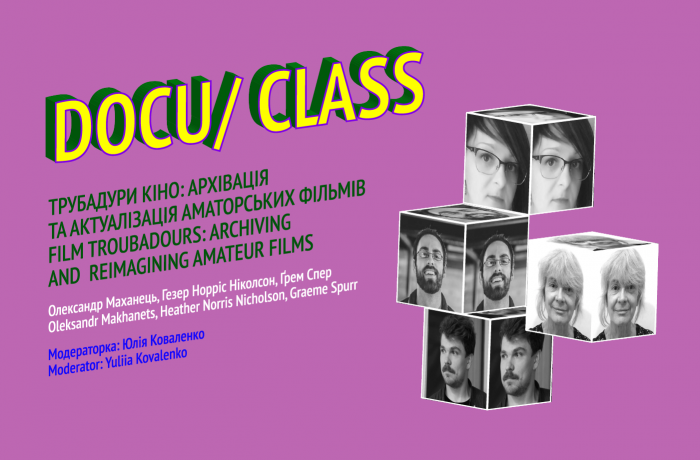
Distancing, which has turned into the rule of quarantine life over the last year, has once again highlighted our vulnerabilities: the more globalised a particular sphere is, the more losses it experiences. Cancelled film festivals, closed cinemas, stalled filmmaking processes, and so on – the film industry all over the world has proved to be very fragile under these new circumstances. Instead, numerous particular practices have acquired new potential – for instance, vernacular or amateur cinema. Therefore, we’ve dedicated a special interactive programme of this year’s Docudays UA to the amateur cinemas of two countries: Scotland, where ‘unofficial’ films have become a significant cultural phenomenon, comprising one of the world’s largest amateur cinema archives; and Ukraine, where researchers’ interest in home movies has been growing for the last few years. For each of the selected short films, we’ve created interactive subtitles featuring expert commentaries from a number of invited researchers that will deepen the understanding of every film and its context.
Why is vernacular cinema valuable? Who is in charge of collecting amateur films? How can we watch amateur movies? This is what the authors of the Film Troubadours: Scotland and Ukraine program will discuss:
Oleksandr Makhanets — curator, author of expert commentaries for the Ukrainian collection’s interactive subtitles, and head of the Urban Media Archive of the Centre for Urban History in Lviv;
Heather Norris Nicholson — author of expert commentaries for the Scottish collection’s interactive subtitles, Honorary Researcher at Huddersfield University and Manchester Metropolitan University;
Graeme Spurr — author of expert commentaries for the Scottish collection’s interactive subtitles, and professor at the London College of Fashion at the London University of the Arts.
The moderator of the event is the Docudays UA programmer, film critic and PhD in Cultural Studies Yuliia Kovalenko.
The event has been organised with the support of the British Council in Ukraine and in cooperation with the Centre for Urban History of East Central Europe.
